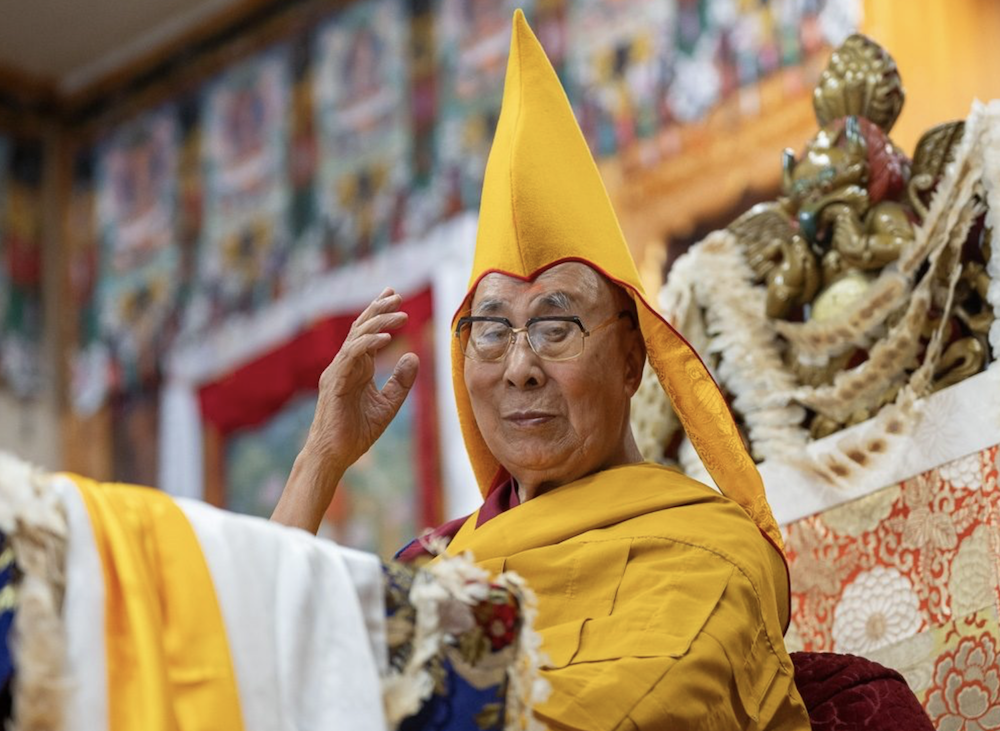
The whole business of succession would be a lot simpler if the Dalai Lama could just regenerate, like Doctor Who. When the time comes for The Doctor to stop looking like David Tennant and start looking like Matt Smith, there is flame coming out of his head and gushing out of his sleeves, and then he explodes. When the smoke clears, there is the new Doctor.There is no delay and no doubt. Once you accept (temporarily) the show’s basic premise that Doctor Who is a benevolent immortal alien who periodically “regenerates” from one human form to another, not even being consistent in ethnicity or gender from one body to the next, you know instantly that it’s the same Doctor in there despite appearances.With the dear old Dalai Lama, it’s different. Reincarnation still happens, but the souls of the dead migrate into the bodies of the new-born and retain no memory of their previous lives. This becomes a problem when the soul of your religion’s leader has to be tracked down in one of those thousands who were born around the same time the leader died.That is exactly the problem facing the Gelug “Yellow Hat” tradition of Tibetan Buddhism, whose leader, the Dalai Lama, turned 90 on Sunday. He will therefore soon be leaving his current incarnation, and it will be the task of his closest associates to track down the young child in whom his soul has taken up residence – who will then become the next Dalai Lama.Then the troubles really start, because Tibet has been officially part of the People’s Republic of China since the Chinese invasion of 1950 and Beijing does not like religious leaders who are beyond its control. In fact, it doesn’t like religious leaders at all, especially if they also embody the national aspirations of a subject people – and least of all if they live abroad.The Dalai Lama ticks every box. He fled Tibet in the midst of a CIA-backed popular rebellion against foreign rule in 1959. He has lived in exile ever since in the northern Indian city of Dharamshala, surrounded by tens of thousands of other Tibetan exiles. And he heads what is in practice a Tibetan government-in-exile, although no other country recognises it.There is nevertheless a good deal of ambient sympathy for Tibet not only in Western countries but in countries of the global south that got their independence just as Tibet was losing its own. They never say anything about it out loud because China is far too big and rich to risk offending, but they do know a colonial relationship when they see one.This makes the Communist authorities in Beijing nervous even though there is no real challenge to Chinese control. They therefore see the Dalai Lama’s passing, whenever it happens, as a golden opportunity to “nationalise” Tibetan Buddhism by giving the state the power to choose his successor.We already had a preview of this 35 years ago when the Panchen Lama, second only to the Dalai Lama, died. After a lengthy but low-profile search Tibetan monks found a six-year-old boy called Gedhun Choekyi Nyima who matched the requirements, and the Dalai Lama (in exile) proclaimed him as the new Panchen Lama in 1995.The little boy and his family were immediately arrested and “disappeared”; none of them has ever been seen again. The Dalai Lama will not make that mistake twice: he has already said that his next reincarnation will be found in “the free world”, which presumably means outside China.But the vast majority of Tibetans still live in Tibet, and it is already clear that they will get a different Dalai Lama, chosen for them by the Communist regime. It could end up like the Great Western Schism of 1378-1417, with two and then three popes at the same time – and that situation could easily last as long, depending on what happens to China in the long run.All of this is ultimately about the survival of a separate Tibetan identity, which is still theoretically possible. Beijing has not yet adopted the final solution it is applying to the Uyghur minority: only Chinese may be used in the schools in both regions, but the Tibetans are not yet being drowned with Han Chinese immigrants.The Chinese Communist regime is now a little bit older than the Soviet Union was when it collapsed, but the CCP is still going strong. If it lasts another fifty years, Tibet’s identity will certainly be eradicated, for there are more than 200 Chinese for every Tibetan. But if it’s gone in 20 years, Tibetan culture may well survive.Dyer is a London-based independent journalist. His new book is titled Intervention Earth: Life-Saving Ideas from the World’s Climate Engineers. Last year’s book, The Shortest History of War, is also still available.






